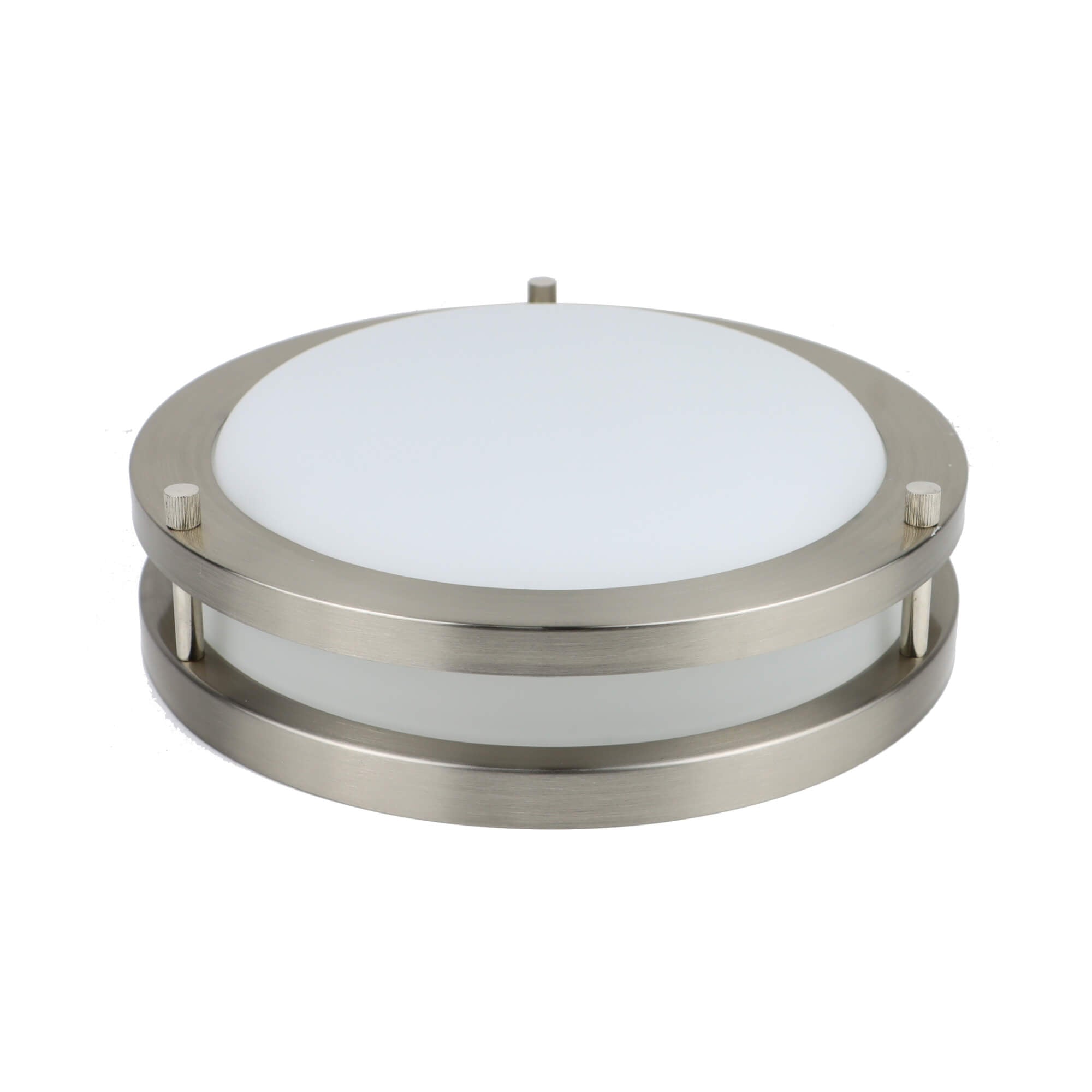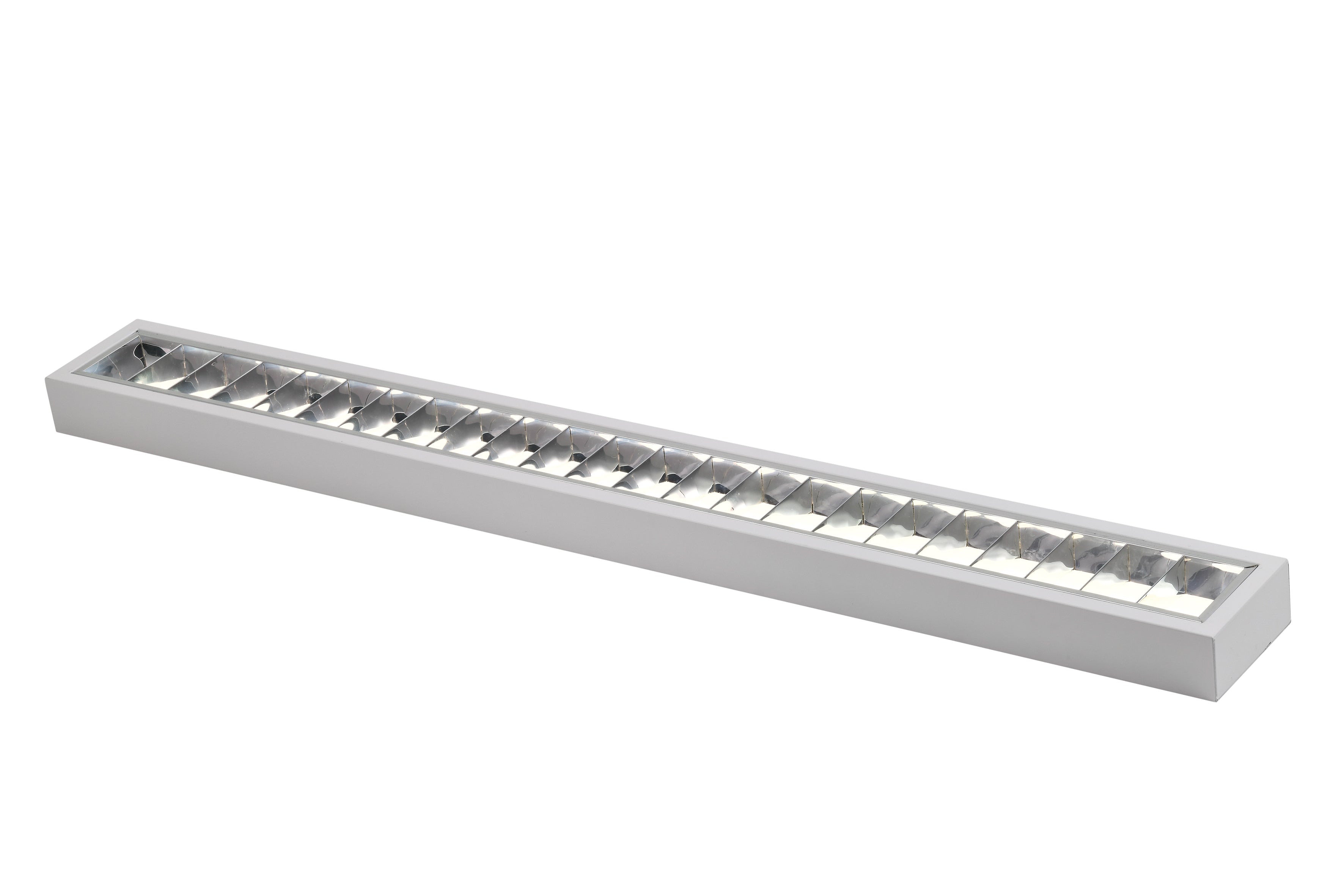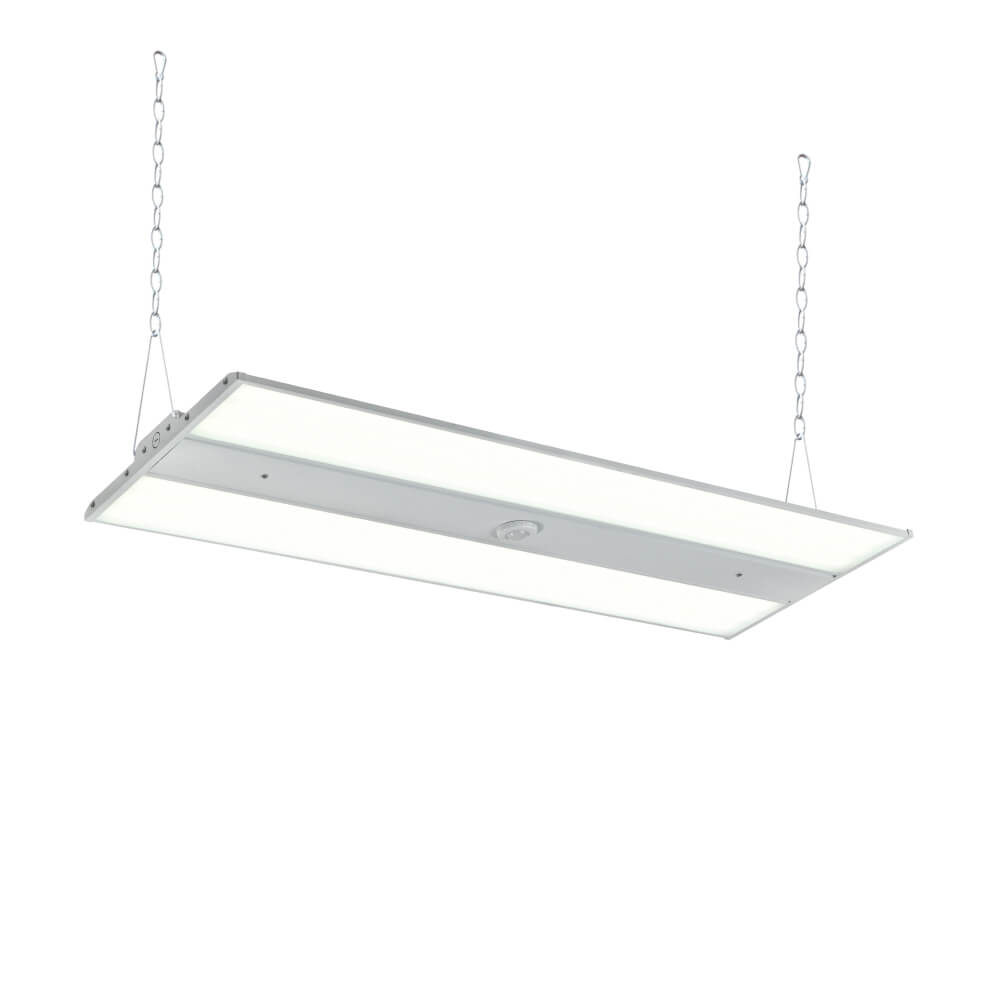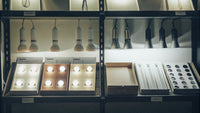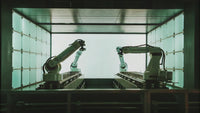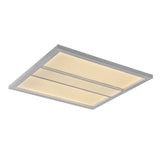How to Find the Best Manufacturing Lighting? (2025)
Manufacturing facilities require specialized lighting to ensure worker safety, productivity, and efficiency. Choosing the best lighting for your manufacturing facility can be a complex process, as there are many factors to consider, such as the type of facility, the tasks being performed, and the lighting standards and regulations that must be met.
This article provides a complete guide to help you find the best manufacturing lighting for your needs.
Factors to Consider When Choosing Factory Lighting
Several key factors must be considered when choosing the best lighting for a manufacturing facility . These include:
- Industrial Lighting Standards: It is crucial to comply with the lighting standards set by organizations such as the Occupational Safety and Health Administration (OSHA), the Illuminating Engineering Society (IES), and the American National Standards Institute (ANSI) . These standards ensure worker safety and productivity by specifying minimum illumination levels for different tasks and areas within the facility.
- Ceiling Height: The height of the ceiling plays a significant role in determining the type of lighting fixtures and their spacing. For example, high-bay lights are suitable for ceilings over 20 feet high, while low-bay lights are appropriate for ceilings between 15 and 25 feet .
- Lighting Requirements: The amount of light needed in a factory depends on the nature of the work being performed and the size of the area. OSHA provides guidelines for minimum illumination levels for various tasks, such as general construction, warehouses, and corridors .
- Types of Lighting Fixtures: Different types of lighting fixtures are available, each with its own advantages and disadvantages. Some common types include high-bay lights, low-bay lights, linear fluorescent lamps, and LED lights .
- Color Temperature and CRI: Color temperature refers to the color appearance of the light, ranging from warm yellows to cool whites. Cooler color temperatures (4000K to 6000K) are generally preferred in manufacturing facilities to keep the environment bright and workers alert . However, different color temperatures can be used in different areas of a facility to create the desired atmosphere. For instance, warmer tones can create a more inviting atmosphere in break rooms, while cooler tones can promote alertness in work areas . The Color Rendering Index (CRI) measures a light source's ability to accurately reflect colors. A CRI score of 75 to 85 is generally considered reasonable for factory lighting . Selecting lighting fixtures with a high CRI is essential to ensure accurate color rendering and the natural appearance of objects, which can impact worker comfort and productivity.
Types of Manufacturing Lighting and Their Pros and Cons
There are several types of lighting commonly used in manufacturing facilities. Each type has its own set of advantages and disadvantages, which should be considered when making a decision.
High-Intensity Discharge (HID) Lighting
While LEDs have become increasingly popular, HID lights, such as metal halide and high-pressure sodium lights, remain a viable option for industrial lighting in certain applications. They offer high light output and are energy-efficient. However, they have some drawbacks, including:
- Warm-up time: HID lights take time to reach full brightness, which can be inconvenient in some situations.
- Color rendering: Some HID lights have poor color rendering, which can make it difficult to distinguish colors accurately.
- Short lifespan: HID lights have a shorter lifespan compared to LEDs, leading to more frequent replacements.
Fluorescent Lighting
Fluorescent lights are another common type of industrial lighting. They are energy-efficient and have a long lifespan compared to incandescent bulbs. However, they also have some disadvantages:
- Sensitivity to temperature: Fluorescent lights can be affected by extreme temperatures, resulting in lower light output.
- Mercury content: Fluorescent lights contain mercury, which is a hazardous material that requires special disposal.
LED Lighting
LED lighting has become increasingly popular in recent years due to its many advantages, including:
- Energy efficiency: LEDs are highly energy-efficient, consuming less power than traditional lighting options .
- Long lifespan: LEDs have a very long lifespan, reducing the frequency of replacements and maintenance costs.
- Improved color rendering: LEDs offer excellent color rendering, ensuring accurate color representation in the workplace.
- Durability: LEDs are more durable and resistant to damage than traditional lighting options. In fact, they are virtually indestructible .
- Reduced Shadows: LEDs are created with large arrays of smaller lights, which results in low shadowing when placed on the ceiling of a factory . This can be particularly beneficial for inspection tasks, where shadows can obscure defects.
- Improved Worker Alertness: LED lighting is typically around 5,000 Kelvins, a color temperature that closely mimics natural light. This can inhibit melatonin production, resulting in more focused and alert employees .
While LEDs have a higher upfront cost, their energy efficiency and long lifespan can result in significant cost savings over time.
Industrial Strip Lights

Industrial strip lights are ideal for smaller areas that require even light distribution. They are typically ceiling-mounted and have a low profile, making them suitable for retail locations, factory stairwells, and hallways .
Troffer Lights
Troffer lights are recessed lighting fixtures commonly used in offices and commercial spaces. They provide a clean and modern look and can be used with a variety of light sources, including LEDs .
Incandescent Lighting
Incandescent lights are the oldest type of electric lighting. They produce a warm, yellowish light and are relatively inexpensive. However, they are very inefficient and have a short lifespan, making them less suitable for industrial applications .
Floodlights
Floodlights are used to illuminate large areas with high-intensity light. They are often used for outdoor applications, such as security lighting and parking lots, but can also be used in manufacturing facilities for specific tasks or areas .
Linear Lights
Linear lights are long, narrow fixtures that provide a continuous line of light. They are often used in offices and commercial spaces but can also be used in manufacturing facilities for general illumination or task lighting .
Task Lights
Task lights provide focused illumination for specific tasks, such as assembly lines or inspection stations. They are typically brighter and positioned closer to the work area to enhance visibility .
Recessed Lights
Recessed lights are installed into the ceiling, providing a clean and unobtrusive look. They can be used with a variety of light sources, including LEDs, and are suitable for general illumination or task lighting .
Area Lights
Area lights are used to illuminate large outdoor areas, such as parking lots and loading docks. They are typically mounted on poles and provide a wide beam of light .
Wallpacks
Wallpacks are outdoor lighting fixtures that are mounted on walls. They are often used for security lighting and to illuminate building entrances and walkways .
Pendant Lights
Pendant lights are suspended from the ceiling and provide direct illumination. They are often used in offices and commercial spaces but can also be used in manufacturing facilities for specific tasks or areas .

Lighting Applications in Manufacturing
In addition to the different types of lighting fixtures, it's important to consider the various applications of lighting in a manufacturing facility :
- Ambient Lighting: Provides general illumination throughout the facility, ensuring workers can move safely and minimizing shadows and dark areas.
- Task Lighting: Focuses on specific areas where detailed work occurs, such as assembly lines or inspection stations.
- Accent Lighting: Although not as common in factories, accent lighting can highlight critical areas or provide additional brightness in key locations, such as emergency exits.
| Type of Lighting | Pros | Cons | Typical Applications |
|---|---|---|---|
| HID Lighting | High light output, Energy-efficient | Warm-up time, Poor color rendering, Short lifespan | High-ceiling areas, outdoor lighting |
| Fluorescent Lighting | Energy-efficient, Long lifespan | Sensitivity to temperature, Mercury content | General illumination, offices |
| LED Lighting | Energy-efficient, Long lifespan, Improved color rendering, Durability | Higher upfront cost | General illumination, task lighting, accent lighting |
| Industrial Strip Lights | Even light distribution, Low profile | Retail locations, stairwells, hallways | |
| Troffer Lights | Clean and modern look, Variety of light sources | Offices, commercial spaces | |
| Incandescent Lighting | Inexpensive, Warm light | Inefficient, Short lifespan | Limited industrial applications |
| Floodlights | High-intensity light, Illuminates large areas | Outdoor lighting, specific tasks | |
| Linear Lights | Continuous line of light | General illumination, task lighting | |
| Task Lights | Focused illumination, Enhanced visibility | Assembly lines, inspection stations | |
| Recessed Lights | Clean and unobtrusive look, Variety of light sources | General illumination, task lighting | |
| Area Lights | Illuminates large outdoor areas, Wide beam of light | Parking lots, loading docks | |
| Wallpacks | Security lighting, Illuminates entrances and walkways | Outdoor lighting | |
| Pendant Lights | Direct illumination | Specific tasks, decorative lighting |
Case Studies of Successful Manufacturing Lighting Implementations
Several case studies demonstrate the benefits of implementing energy-efficient lighting solutions in manufacturing facilities. For example, one case study highlighted the transformation of a major industrial complex through the implementation of LED lighting . The complex, spanning over 500,000 square feet, faced challenges such as high energy consumption, frequent maintenance, and poor lighting quality with its traditional lighting system. By switching to LED lighting, the complex achieved significant energy savings, reduced maintenance costs, and improved lighting quality, resulting in enhanced productivity and safety.
Another case study focused on a manufacturing facility that upgraded its lighting system to LED technology . The upgrade resulted in a 16% reduction in energy consumption, translating to annual energy savings of approximately 80,000 kWh. In addition to energy savings, the facility also experienced reduced maintenance needs, improved safety, and enhanced working conditions.
These case studies demonstrate the positive impact of implementing energy-efficient lighting solutions in manufacturing facilities, leading to cost savings, improved productivity, and enhanced safety.
Lighting Regulations and Standards for Manufacturing Facilities
Manufacturing facilities must comply with various lighting regulations and standards to ensure worker safety and well-being. OSHA sets minimum illumination levels for different areas within a facility, such as general construction areas, warehouses, and corridors . These standards are designed to prevent accidents and injuries by providing adequate lighting for workers to perform their tasks safely . OSHA also requires that all light fixtures have protective plates, be mounted a minimum of seven feet above work surfaces (or have an OSHA-compliant shatterproof shield), have no exposed live parts, have no openings large enough to put a finger through, and be firmly mounted to the wall or ceiling . Non-compliance with these standards can result in costly citations .
In addition to OSHA regulations, other standards, such as those set by the IES, provide guidelines for lighting design and implementation in industrial settings. These standards address factors such as illuminance levels, glare control, and color rendering to ensure optimal lighting conditions for various tasks and environments. They also address vertical illumination, which should be 25-50% of the horizontal illumination and free of shadows in critical areas to create a safe working environment .
Compliance and Safety Considerations
Beyond basic illumination requirements, there are other important safety and compliance considerations for manufacturing lighting :
- Robust Fixtures: Manufacturing environments often involve dust, chemicals, oils, and moisture. Light fixtures should have robust structures and features like water-sealed bodies and explosion-proof ratings to withstand these conditions.
- Emergency Lights: Adequate emergency lighting is crucial for safe evacuation during power outages or other emergencies. This includes exit signs and lighting in all pathways leading to exits.
- Glare Reduction: Lighting should be designed to minimize glare, which can cause eye strain and contribute to accidents.
- Cord Management: Proper cord and cable management is essential to prevent tripping hazards and maintain a safe working environment.
Top Manufacturers of Manufacturing Lighting
Several manufacturers specialize in providing high-quality lighting solutions for manufacturing facilities. Here's a table summarizing some of the top manufacturers:
| Company Name | Headquarters | Key Products | Website |
|---|---|---|---|
| halconlighting | ZhongShan, PRC | Residential&Commercial LED lighting fixtures | halconlighting.com |
| Philips Lighting (Signify) | Eindhoven, Netherlands | Residential & Commercial LED Fixtures, LED Components (Modules & Drivers) | signify.com |
| Osram | Munich, Germany | Industrial & Automotive Lighting, Smart Sensors, LED Chips | osram.com |
| GE Lighting | Ohio, USA | LED Fixtures, Home Automation Solutions | gelighting.com |
| Cree Lighting | North Carolina, USA | LED Fixtures, Semiconductors | cree-led.com |
| Acuity Brands | Georgia, USA | LED Fixtures, Lighting Controls, Building Management Solutions | acuitybrands.com |
These manufacturers offer a wide range of lighting products and solutions to meet the specific needs of different manufacturing facilities.
Energy Efficiency and Cost Savings in Manufacturing Lighting
Energy efficiency is a crucial consideration in manufacturing lighting, as lighting can account for a significant portion of a facility's energy consumption. Upgrading to energy-efficient lighting technologies, such as LEDs, can result in substantial cost savings and reduce a facility's environmental impact.
LEDs are significantly more energy-efficient than traditional lighting options, such as incandescent and fluorescent lights . They consume less power while providing the same or better light output, leading to lower electricity bills. In addition to energy savings, LEDs also have a longer lifespan, reducing the frequency of replacements and associated maintenance costs . The energy savings from LEDs can often finance the cost of replacing older lighting systems .
LED Retrofit Kits
When upgrading to LEDs, there are different types of retrofit kits to consider :
- Lamp Retrofits: These involve replacing existing lamps with LED lamps while keeping the existing fixture. This is a cost-effective option, but it may not provide the same level of energy savings as a full fixture replacement.
- LED Retrofit Kits: These kits replace the entire fixture with an LED fixture, including the ballast, socket, and electronics. This option offers longer lifespan, better thermal management, and potentially higher energy savings (up to 50%) but is more expensive than lamp retrofits.
Several strategies can be implemented to maximize energy efficiency and cost savings in manufacturing lighting:
- Optimize Lighting Layout and Design: Proper lighting design can ensure that light is directed where it is needed, minimizing wasted energy.
- Utilize Natural Light: Taking advantage of natural light can reduce the need for artificial lighting during daylight hours.
- Implement Lighting Controls: Installing motion sensors, dimmers, and timers can help to reduce energy consumption by ensuring that lights are only on when needed.
- Regular Maintenance: Regularly cleaning and maintaining lighting fixtures can ensure optimal performance and energy efficiency.
- Task-Based Optimization: Light should be optimized according to the tasks performed in different areas of the facility. For example, more lighting may be needed in areas critical to production, quality control, and safety, while less lighting may be sufficient in storage areas or break rooms .
By implementing these strategies, manufacturing facilities can significantly reduce their energy consumption and achieve substantial cost savings.
Conclusion
Choosing the best manufacturing lighting requires careful consideration of various factors, including lighting standards, ceiling height, lighting requirements, types of fixtures, and energy efficiency. By understanding these factors and exploring the available options, manufacturing facilities can create a well-lit and safe working environment that promotes productivity, efficiency, and worker well-being.
It's essential to comply with OSHA regulations and industry standards to ensure worker safety and avoid costly citations. Energy-efficient lighting solutions, such as LEDs, can lead to significant cost savings and reduce a facility's environmental impact. By optimizing lighting design, utilizing natural light, implementing lighting controls, and performing regular maintenance, manufacturing facilities can further enhance energy efficiency and create a more sustainable operation. Ultimately, by carefully considering the factors outlined in this article and implementing energy-efficient lighting solutions, manufacturing facilities can create a safer, more productive, and more sustainable working environment.
